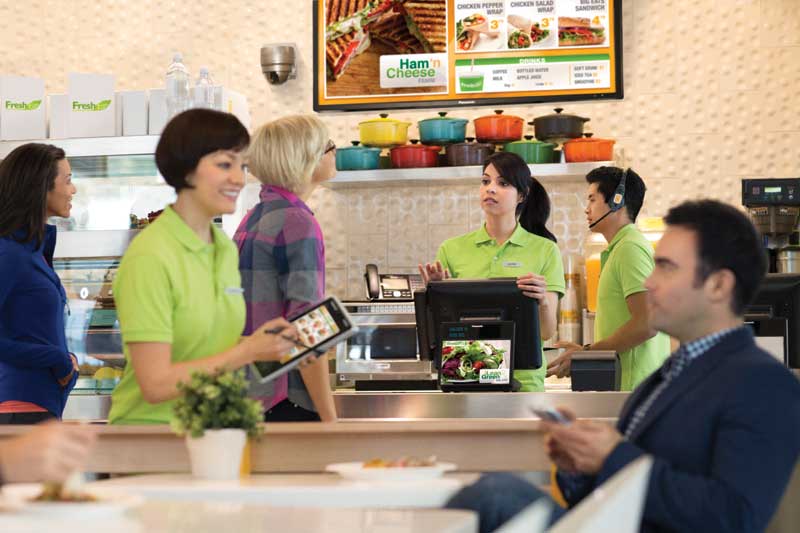
Digital menu boards can be updated throughout the day for different mealtimes or in response to product shortages.
Ordering kiosks
Touch-screen kiosks, such as those recently rolled out in McDonald’s Canada restaurants, require an intuitive graphical user interface (GUI) to enable customers to browse through product categories and options for customizing their meals. After finalizing their orders on-screen, McDonald’s customers can pay at the kiosk and then proceed to the counter for takeout or to a table for dining in.
“By interfacing with the POS system, the kiosks only display what is in stock and can indicate when an item isn’t,” Baird explains. “The use of food images helps break down language barriers, allowing many people to order more easily than they could in-person at the cash counter. It’s also a lot less embarrassing to add dessert!”
Indeed, studies show customers tend to place bigger orders when using touch screens than when ordering from a cashier.
Again, dayparting enables the menus to be adjusted as needed. When McDonald’s Canada introduced all-day breakfast selections earlier this year, for example, the kiosks made it easier to dictate which of the morning menu’s items would still be made available throughout the afternoon and evening (e.g. hash browns) and which would not (e.g. pancakes).
Similar kiosks are now being pilot-tested in redesigned Subway franchises, including two Canadian locations (in Beauport and Granby, Que.), and by an increasing number of coffee chains.
“Kiosks are so popular, some restaurants are now experimenting with touch-screen ordering at their drive-thrus, too,” says Baird.
Table-mounted screens
Another option for serving dine-in customers is to place interactive digital menus right at their tables by using tablet touch screens, such as Apple’s iPad or Panasonic’s Toughpad.
At Toronto’s Pearson International Airport, for example, table-mounted tablets allow departing passengers to place food and drink orders while also checking their flight status.
“We’re now pilot-testing an interactive table with an embedded display, where the entire surface is an ordering screen,” says Baird, echoing the Surface Hub multi-touch coffee tables that were introduced by Microsoft 10 years ago, later rebranded as PixelSense and eventually discontinued. “That technology may have been ahead of its time. Today’s younger customers actively want this kind of interactivity, along with games to entertain them while they wait for their food. And with super-directional speakers, the audio component of digital signage content at one table need not be heard at the next table over.”





